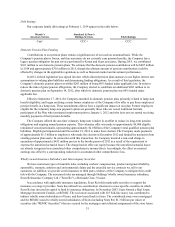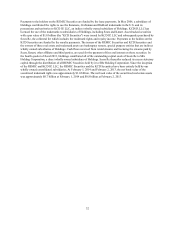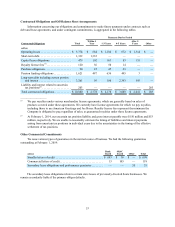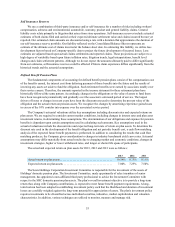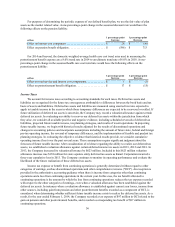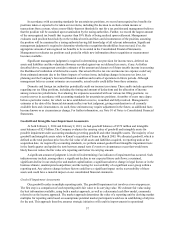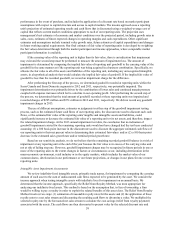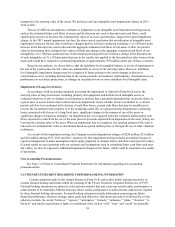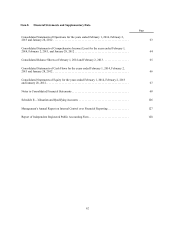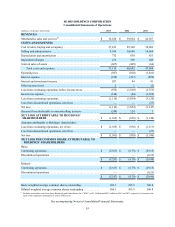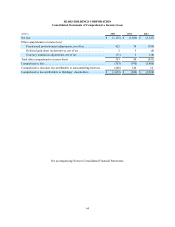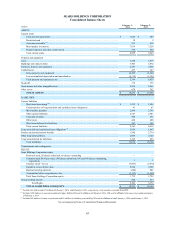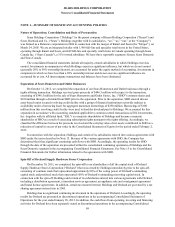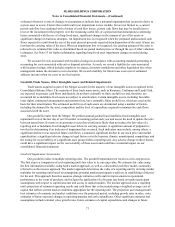Sears 2013 Annual Report Download - page 61
Download and view the complete annual report
Please find page 61 of the 2013 Sears annual report below. You can navigate through the pages in the report by either clicking on the pages listed below, or by using the keyword search tool below to find specific information within the annual report.61
Item 7A. Quantitative and Qualitative Disclosures about Market Risk
We face market risk exposure in the form of interest rate risk and foreign currency risk. These market risks arise
from our derivative financial instruments and debt obligations.
Interest Rate Risk
We manage interest rate risk through the use of fixed and variable-rate funding. All debt securities are
considered non-trading. At February 1, 2014, 55% of our debt portfolio was variable rate. Based on the size of this
variable rate debt portfolio at February 1, 2014, which totaled approximately $2.3 billion, an immediate 100 basis
point change in interest rates would have affected annual pretax funding costs by $23 million. These estimates do
not take into account the effect on income resulting from invested cash or the returns on assets being funded. These
estimates also assume that the variable rate funding portfolio remains constant for an annual period and that the
interest rate change occurs at the beginning of the period.
Foreign Currency Risk
At February 1, 2014, we had a foreign currency forward contract outstanding, totaling $43 million Canadian
notional value and with a remaining life of 0.1 years, designed to hedge our net investment in Sears Canada against
adverse changes in exchange rates. The aggregate fair value of the forward contract at February 1, 2014 was $2
million. A hypothetical 1% adverse movement in the level of the Canadian exchange rate relative to the U.S. dollar
at February 1, 2014, with all other variables held constant, would have resulted in a fair value of this contract of
approximately $1 million at February 1, 2014, a decrease of $1 million. Certain of our currency forward contracts
require collateral be posted in the event our liability under such contracts reaches a predetermined threshold. Cash
collateral posted under these contracts is recorded as part of our accounts receivable balance. We had no cash
collateral posted under our contracts at February 1, 2014.
Sears Canada reduces its foreign exchange risk with respect to U.S. dollar denominated assets and liabilities and
purchases of goods or services by entering into foreign exchange forward contracts. At February 1, 2014, these
contracts had a notional value of $90 million. The fair value of the forward contracts at February 1, 2014 was
approximately $6 million. A hypothetical 1% adverse movement in the level of the Canadian exchange rate relative
to the U.S. dollar at February 1, 2014, with all other variables held constant, would have resulted in a fair value for
these contracts of approximately $5 million at February 1, 2014, a decrease of $1 million.
Counterparty Credit Risk
We actively manage the risk of nonpayment by our derivative counterparties by limiting our exposure to
individual counterparties based on credit ratings, value at risk and maturities. The counterparties to these instruments
are major financial institutions with investment grade credit ratings or better at February 1, 2014. We had no
derivative instruments at February 2, 2013.


